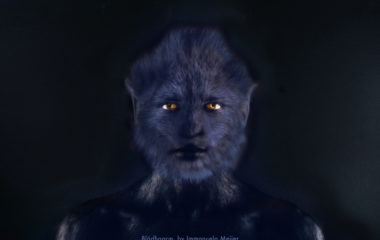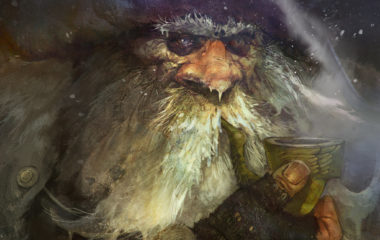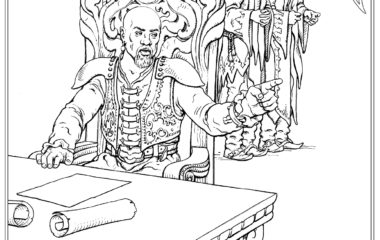
We featured Christopher’s concept artwork for Ellesméra earlier this week, and so we thought it would be nice to pair it with today’s article.
When I first starting working for Christopher several years ago, he tasked me with keeping encyclopedic records of the world of Alagaësia and its inhabitants. Why? So, when he’s ready, he can jump right back into writing Book Five without missing minor—but important—details and loose ends from the original series!
There’s no reason to let all this work go to waste in the meantime though! Below you’ll find the comprehensive entry for the elves’ capital, excluding separate but related entries for Tialdarí Hall and the Crags of Tel’naeír.
Ellesméra:
The name “Ellesméra” was inspired by Ellesmere Island (Inuit: Umingmak Nuna, meaning “land of Muskox”), which is part of the Qikiqtaaluk Region of the Canadian territory of Nunavut.
Located deep within Du Weldenvarden, Ellesméra is the elves’ capital city and where the royal family resides. Those seeking entry must request permission from Gilderien the Wise, wielder of the White Flame of Vándil. Other powerful wards also guard the city.
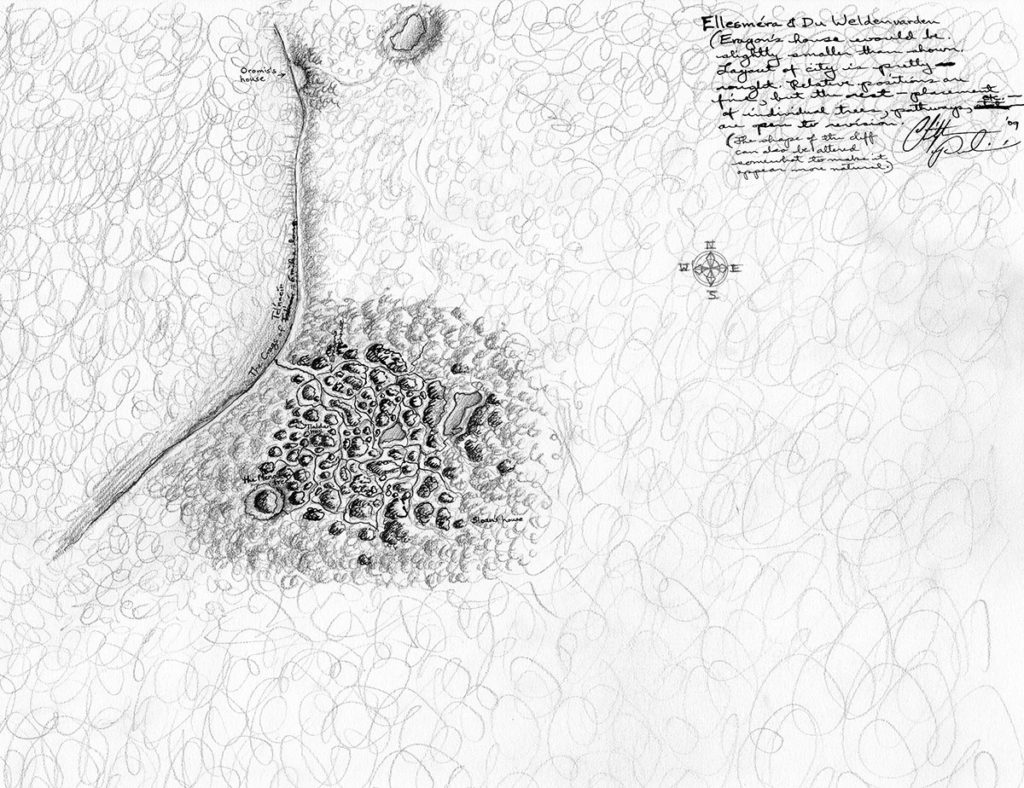
The entirety of Du Weldenvarden is protected from any type of magical communication from the outside world and no one can enter the borders using arcane means. The elves often sing in the ancient language to influence the growth, shape, and health of the local plants and animals; thousands of years of magic permeating the land have led to some unexpected ramifications. Travelers that dare to enter the woods must not only safeguard against standard dangers but also avoid ancient forgotten spells and creatures augmented by their exposure to the energies found in Du Weldenvarden.
The structures and tools of Ellesméra are made from living trees and plants, which the elves sing into the desired shapes. Newcomers may not notice the existence of the city at all, so organic are the buildings, paths, and gardens. (For inspiration from real world examples, see Patrick Dougherty‘s work and search keywords like arbortecture, living bridges, structures made of living trees, and pleaching.)
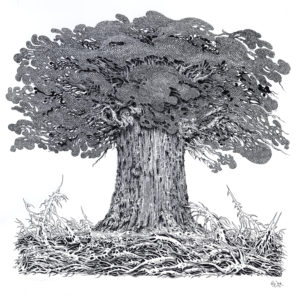
Ellesméra was one of the first settlements established by the elves following their immigration to Alagaësia. As a result, some of the largest trees found in Du Weldenvarden, including the Menoa tree, surround the capital. The city survived Du Fyrn Skulblaka as well as the Fall of the Dragon Riders. With Galbatorix’s rise to power, the elves hid their most precious weapons against the new king in Ellesméra: Oromis and Glaedr.
During the events of the Inheritance Cycle, Oromis (who only identified himself as the “Cripple Who Is Whole”) telepathically guided Eragon out of the shadows left in the young Rider’s mind by the Shade Durza. Once the boy was out of immediate danger, the elf told him to come to Ellesméra for training. When Eragon and Saphira arrived in the capital—and Queen Islanzadí introduced them to Oromis and Glaedr—they were overjoyed to discover the existence of another Rider and dragon. Their instruction began immediately.
The elves celebrated the Agaetí Blödhren during this period. Shortly thereafter, Eragon and Saphira needed to return to the Varden to bolster the troops invading the Empire.
Their responsibilities to Nasuada and the rebels were great, but that didn’t stop the occasional side adventure, one of which involved the successful rescue of Katrina and Sloan from imprisonment in Helgrind. Eragon banished Sloan to the elven capital for his actions (murder and betrayal) and forbade him from ever contacting his daughter again. The blind butcher would only be free if he changed, thereby altering his true name and rendering the magical compulsion he was under null, or if Eragon released him. The elves allowed Sloan to stay, but he showed only small signs of improvement. (At the end of Inheritance, Eragon amended the spells the restore the old man’s eyesight.) It’s likely Sloan would live out the rest of his days in the elves’ care.
The next time the Rider and dragon were able to visit Ellesméra to complete their training was following the election of Orik as the new monarch of the dwarves. While in the magical city, Eragon, Saphira, and the renowned elf smith, Rhunön, were able to craft the Dragon Rider sword Brisingr using brightsteel retrieved from the roots of the Menoa tree. Time ran out and Eragon, Saphira, Oromis, and Glaedr left Du Weldenvarden to join the elven and Varden forces against Galbatorix.
Queen Islanzadí was killed during the Battle of Urû’baen, but the errant human king was defeated nonetheless. The majority of the allied military forces dispersed back to their respective homes. Roran, Ismira, and Katrina were invited to visit Ellesméra as houseguests of the new queen, Arya. Eragon and Saphira later briefly joined them. The trip left a lasting impression on Roran and Katrina; Stronghammer planned to rebuild Carvahall using inspiration gained from Tialdarí Hall.
Known residents:
Adarë
Alanna
Anurin
Arya
Bellaen du Hljödhr
Blagden
Caretakers
Ceranthor
Cripple Who Is Whole (aka Oromis)
Däthedr
Dellanir
Dream Dancer (aka Maud)
Dusan
Evandar
Fäolin
Fiolr Valtharos
Fírnen
Gilderien the Wise
Glaedr
Haldthin
House Miolandra
Iduna (one of the Caretakers)
Islanzadí
Linnëa
Maud
Menoa Tree
Mourning Sage (aka Oromis)
Nëya (one of the Caretakers)
Niduen
Oromis
Osthato Chetowä (aka Oromis)
Quickpaw (aka Maud)
Rhunön
Sloan
Tarmunora
Togira Ikonok (aka Oromis)
Vanir
Watcher (aka Maud)
Places:
Crags of Tel’naeír
Menoa Tree
Tialdarí Hall
Description:
“From their height, the city appeared as a series of gaps in the voluminous canopy, islands of calm in a restless ocean. Ellesméra’s true scope was now revealed; it extended for several miles to the west and to the north.” (Narrative, 1st edition Eldest, page 238)
The ground was strewn with dense patches of flowers. From pink roses to bluebells and lilies, spring’s fleeting treasure was heaped about like piles of rubies, sapphires, and opals. Their intoxicating aromas attracted hordes of bumblebees. To the right, a stream chuckled behind a row of bushes, while a pair of squirrels chased each other around a rock.
At first it looked to Eragon like a place where deer might bed for the night. But as he continued to stare, he began to pick out paths hidden among the brush and trees; soft warm light where normally there would be auburn shadows; an odd pattern in the shapes of the twigs and branches and flowers, so subtle that it nearly escaped detection—clues that what he saw was not entirely natural. He blinked, and his vision suddenly shifted as if a lens had been placed over his eyes, resolving everything into recognizable shapes. Those were paths, aye. And those were flowers, aye. But what he had taken to be clusters of lumpy, twisted trees were in fact graceful buildings that grew directly out of the pines.
One tree bulged at the base to form a two-story house before sinking its roots into the loam. Both stories were hexagonal, although the upper level was half as small as the first, which gave the house a tiered appearance. The roofs and walls were made of webbed sheets of wood draped over six thick ridges. Moss and yellow lichen bearded the eaves and hung over jeweled windows set into each side. The front door was a mysterious black silhouette recessed under an archway wrought with symbols.
Another house was nestled between three pines, which were joined to it through a series of curved branches. Reinforced by those flying buttresses, the house rose five levels, light and airy. Beside it sat a bower woven out of willow and dogwood and hung with flameless lanterns disguised as galls.
Each unique building enhanced and complemented its surroundings, blending seamlessly with the rest of the forest until it was impossible to tell where artifice ended and nature resumed. The two were in perfect balance. Instead of mastering their environment, the elves had chosen to accept the world as it was and adapt themselves to it.” (Narrative, 1st edition Eldest, pages 221-222)
“…Arya proceeded along a cobblestone path set with bits of green tourmaline, which looped among the hollyhocks and the houses and the trees before finally crossing a stream.” (Narrative, 1st edition Eldest, page 223)
Like this article? Check out the rest of the Encyclopedia Alagaësia series!


